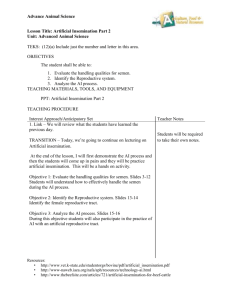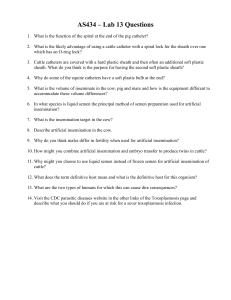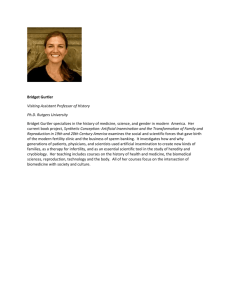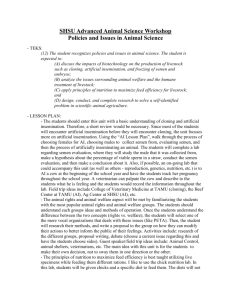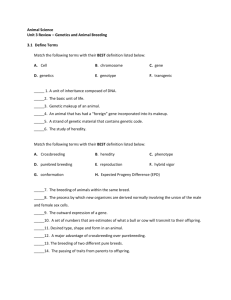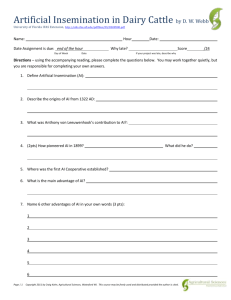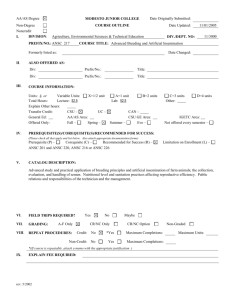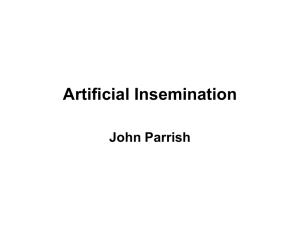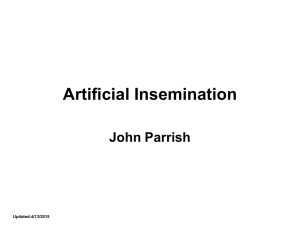File
advertisement
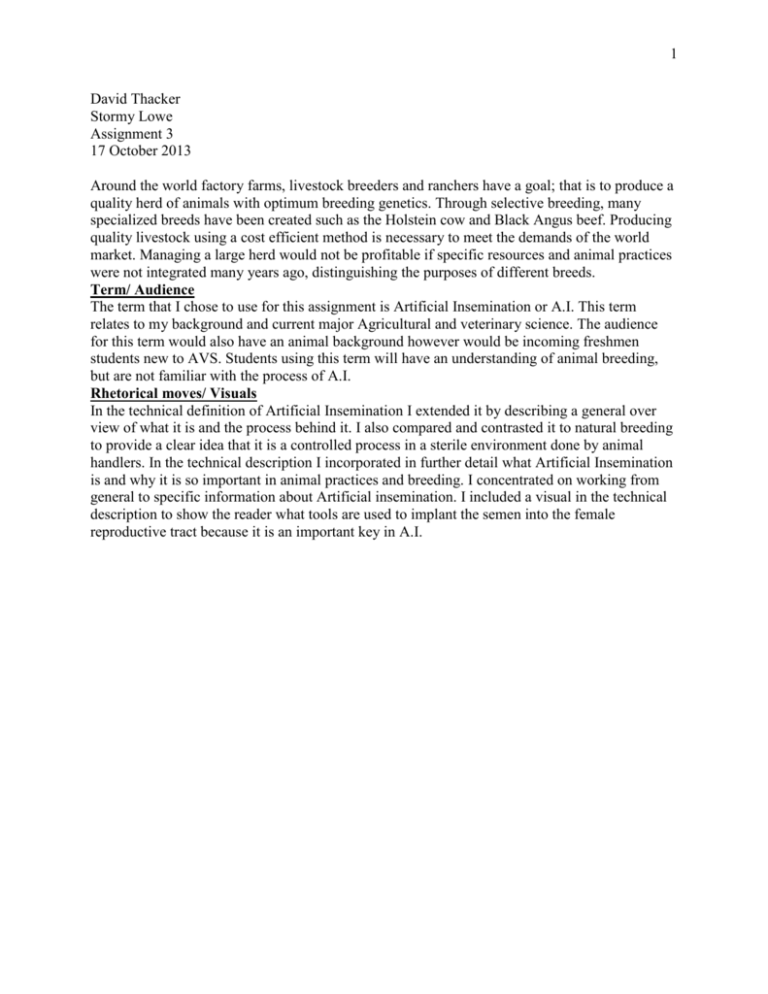
1 David Thacker Stormy Lowe Assignment 3 17 October 2013 Around the world factory farms, livestock breeders and ranchers have a goal; that is to produce a quality herd of animals with optimum breeding genetics. Through selective breeding, many specialized breeds have been created such as the Holstein cow and Black Angus beef. Producing quality livestock using a cost efficient method is necessary to meet the demands of the world market. Managing a large herd would not be profitable if specific resources and animal practices were not integrated many years ago, distinguishing the purposes of different breeds. Term/ Audience The term that I chose to use for this assignment is Artificial Insemination or A.I. This term relates to my background and current major Agricultural and veterinary science. The audience for this term would also have an animal background however would be incoming freshmen students new to AVS. Students using this term will have an understanding of animal breeding, but are not familiar with the process of A.I. Rhetorical moves/ Visuals In the technical definition of Artificial Insemination I extended it by describing a general over view of what it is and the process behind it. I also compared and contrasted it to natural breeding to provide a clear idea that it is a controlled process in a sterile environment done by animal handlers. In the technical description I incorporated in further detail what Artificial Insemination is and why it is so important in animal practices and breeding. I concentrated on working from general to specific information about Artificial insemination. I included a visual in the technical description to show the reader what tools are used to implant the semen into the female reproductive tract because it is an important key in A.I. 2 Artificial Insemination Artificial Insemination is the process of collecting semen from a male animal and inserting it into the reproductive tract of selected females. This method verses natural breeding, is done in a controlled, sterile environment and reduces stress on both the animals and handlers. Commonly used on many types of livestock, it is done to efficiently produce desired traits in offspring and improve genetics among herds. The semen from several males can be collected, put into straws and frozen in a liquid nitrogen tank. Freezing the semen allows owners to ship it across the country to other breeders as well as preserve it for several years and use it as needed. 3 What is it? Artificial Insemination (A.I.) is managing a herd of livestock and selecting Sires and Dams to breed, however this process is manually done unlike natural breeding. Semen is collected from a male that is diluted, put into plastic straws that are 2-3 ft. in length and then frozen to be stored or shipped to other breeders. A sire is selected based on specific desired genetics that will pass on to the offspring. Several females will be implanted with the semen using an A.I. gun (artificial insemination gun) which is a tool used for inseminating as well as embryo transfer. Figure 1 demonstrates the long narrow stainless steel rod with a plunger and handle. The plunger holds the straw that the semen or embryo is expelled from into the reproductive tract of the females. The goal of a successful breeding is to produce desired traits in the offspring that will improve the genetics within the herd. Both dairy and beef cattle are bred for calving ease and scored on a scale from 1-5. 1 represents little to no assistance giving birth and 5; pulling the calf out or a csection. Selecting a bull to breed can be done using this scale because you can predict calving ease by the size of offspring he produces. Rate of gain is also highly desirable among breeders because they will gain the most amount of weight per day allowing for a more cost efficient herd in beef cattle. Dairy cattle are bred for calving Figure 1: components of an A.I. gun, picture not to scale. ease, rate of gain, and milk production. High milk production is a key component for dairy cattle breeders. The benefits of A. I. include not having a bull onsite, affordability and predictability of offspring by selecting desired traits. Artificial Insemination has changed how breeding live stock is done worldwide. 4 Work Cited: Bal Krishan Plasikrafts.<http://balkrishan.com/insemination_guns.html>.Accessed 14 October 2013

